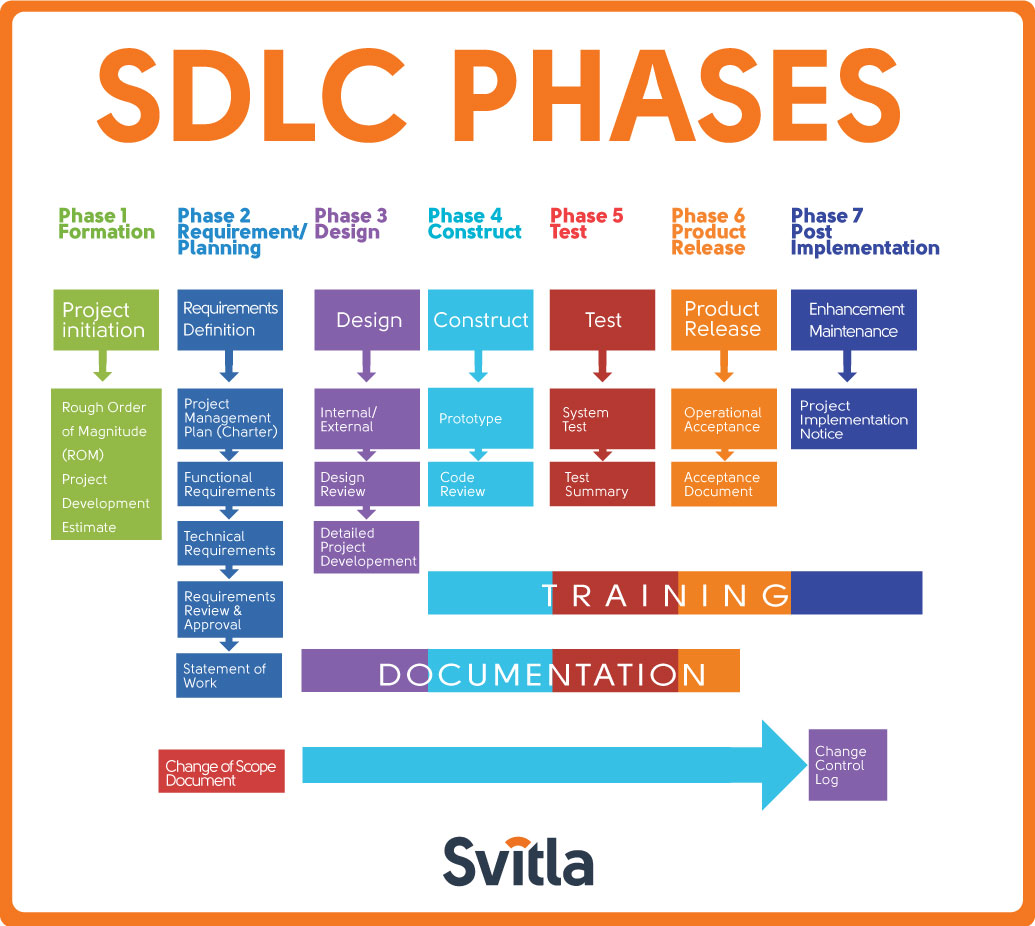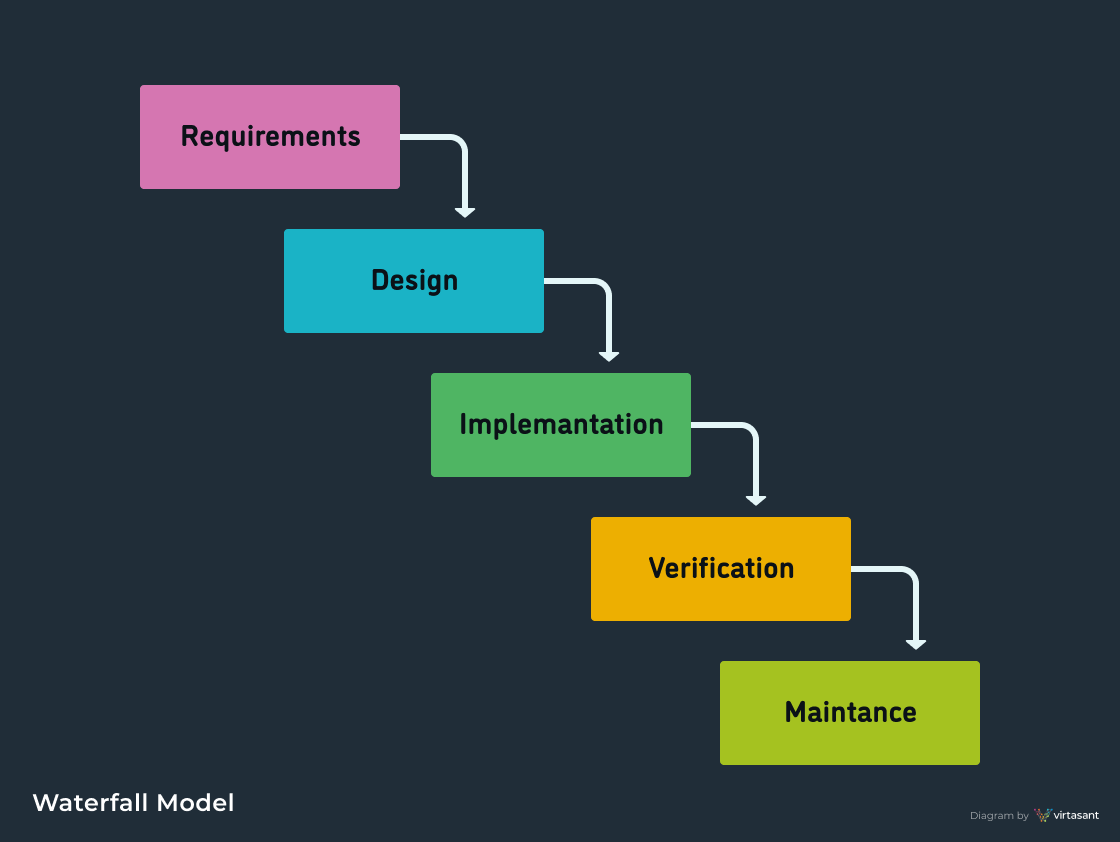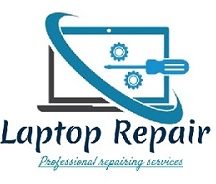Choosing the Right Software Development Lifecycle (SDLC) Methodology

Introduction
When it comes to software development, choosing the right methodology is crucial for the success of a project. The Software Development Lifecycle (SDLC) methodology provides a structured approach to the development process, ensuring efficiency, quality, and timely delivery of software solutions. However, with numerous SDLC methodologies available, it can be overwhelming to determine which one is the best fit for your project. In this blog post, we will explore the different SDLC methodologies and provide insights to help you make an informed decision.
Waterfall Methodology
The Waterfall methodology is a linear and sequential approach to software development. It follows a predefined set of phases, including requirements gathering, design, implementation, testing, deployment, and maintenance. Each phase must be completed before moving on to the next, making it ideal for projects with well-defined and stable requirements. However, it lacks flexibility and can be challenging to adapt to changing needs.
Agile Methodology

The Agile methodology is an iterative and incremental approach to software development. It emphasizes collaboration, adaptability, and customer satisfaction. Agile projects are divided into short iterations called sprints, where requirements are gathered, developed, tested, and reviewed. This methodology allows for frequent feedback and adjustments, making it suitable for projects with evolving requirements or uncertain environments.
Scrum Methodology
Scrum is a specific implementation of the Agile methodology. It focuses on small, cross-functional teams working in short sprints to deliver incremental value. Scrum introduces roles such as the Product Owner, Scrum Master, and Development Team, each with specific responsibilities. It promotes transparency, inspection, and adaptation, enabling teams to quickly respond to changes and deliver high-quality software.
Kanban Methodology
Kanban is another Agile methodology that visualizes the workflow of a project using a Kanban board. It emphasizes continuous delivery and limiting work in progress (WIP). Kanban allows teams to visualize bottlenecks, optimize flow, and improve efficiency. It is suitable for projects with a steady flow of incoming work or where flexibility and responsiveness are essential.
Lean Methodology
The Lean methodology aims to eliminate waste and maximize value in software development. It focuses on delivering value to the customer while minimizing resources, time, and effort. Lean principles include identifying and eliminating non-value.
Summary
Choosing the right SDLC methodology is essential for effective software development. The summary of this blog post will provide a quick overview of the different methodologies discussed:
- Waterfall: A linear and sequential approach that is ideal for projects with well-defined requirements and minimal changes.
- Agile: A flexible and iterative approach that promotes collaboration, adaptability, and continuous improvement.
- Scrum: A subset of Agile that emphasizes teamwork, regular communication, and incremental development.
- Kanban: A visual and flow-based methodology that focuses on limiting work in progress and optimizing workflow.
- Lean: A methodology that aims to eliminate waste, improve efficiency, and deliver value to customers.
- Spiral: A risk-driven approach that combines elements of both waterfall and iterative development.
By understanding the characteristics and advantages of each methodology, you can select the one that aligns with your project requirements, team dynamics, and organizational goals. Remember, there is no one-size-fits-all approach, and it’s important to adapt the methodology to sui go to these guys t your specific needs.
- Q: What is a Software Development Lifecycle (SDLC) methodology?
- A: SDLC methodology refers to a structured approach followed during the development of software applications. It outlines the various phases, activities, and deliverables involved in the software development process.
- Q: Why is it important to choose the right SDLC methodology?
- A: Choosing the right SDLC methodology is crucial as it directly impacts the success of a software development project. Each methodology has its own strengths and weaknesses, and selecting the appropriate one ensures efficient resource utilization, timely delivery, and high-quality software.
- Q: What are the different types of SDLC methodologies?
- A: Some commonly used SDLC methodologies include Waterfall, Agile, Scrum, Kanban, Spiral, and Lean. Each methodology follows a distinct set of principles, processes, and practices.
- Q: How do I determine the right SDLC methodology for my project?
- A: The choice of SDLC methodology depends on various factors such as project requirements, team size, project complexity, customer involvement, and flexibility needs. Conducting a thorough analysis of these factors will help in selecting the most suitable methodology.
- Q: What is the Waterfall methodology?
- A: The Waterfall methodology is a linear and sequential approach where each phase of the software development process is completed before moving on to the next. It is ideal for projects with well-defined requirements and minimal changes expected during development.
- Q: What is Agile methodology?
- A: Agile methodology is an iterative and incremental approach that focuses on collaboration, adaptability, and customer satisfaction. It involves breaking the project into smaller iterations called sprints, allowing for flexibility and continuous improvement.
- Q: What is Scrum methodology?
- A: Scrum is an Agile framework that emphasizes teamwork, accountability, and iterative progress. It involves the use of short development cycles called sprints, daily stand-up meetings, and regular feedback to ensure efficient project management.
- Q: What is Kanban methodology?
- A: Kanban is an Agile methodology that visualizes the workflow of a project

Hello, I’m Brayden Denman, a passionate and experienced Mobile App Developer specializing in Cloud Computing, Software Development, Mobile App Integration, and AI & Machine Learning. With a strong background in these fields, I strive to create innovative and user-friendly solutions that meet the ever-evolving needs of businesses and individuals.
Introduction When it comes to software development, choosing the right methodology is crucial for the success of a project. The Software Development Lifecycle (SDLC) methodology provides a structured approach to the development process, ensuring efficiency, quality, and timely delivery of software solutions. However, with numerous SDLC methodologies available, it can be overwhelming to determine which…

Hello, I’m Brayden Denman, a passionate and experienced Mobile App Developer specializing in Cloud Computing, Software Development, Mobile App Integration, and AI & Machine Learning. With a strong background in these fields, I strive to create innovative and user-friendly solutions that meet the ever-evolving needs of businesses and individuals. Read More.
Recent Posts
- Challenges in Cross-Platform Digital Asset Search and Retrieval
- The Role of AI in Enhancing Digital Asset Retrieval
- Implementing Automation in Digital Asset Recovery Processes
- Digital Asset Retrieval: Addressing Security and Privacy Concerns
- Optimizing Metadata for Quicker Digital Asset Discovery
- Overcoming Barriers in Searching and Accessing Digital Assets
- Best Practices for Efficient Digital Asset Retrieval
- Harnessing the Power of Deep Learning: A Beginner’s Guide
- Scalability Issues in Large-Scale Machine Learning Projects
- Navigating the Ethical Challenges of AI Implementations
